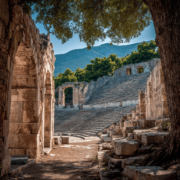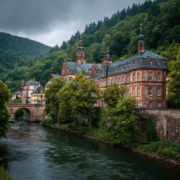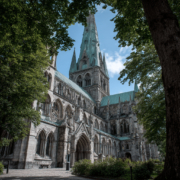Unveiling the Tranquil Beauty of Kobe Nunobiki Herb Garden: A Hidden Gem on Mount Rokko
In the grand tradition of travel writers who seek the soul of a place beyond its surface attractions, one discovers that Kobe’s Nunobiki Herb Garden possesses that rare quality which transforms a simple botanical collection into something approaching the transcendent. Perched on the slopes of Mount Rokko, this sanctuary reveals itself not as mere tourist destination, but as a meditation on the delicate relationship between human cultivation and natural wonder.
A Sanctuary Above the Urban Sprawl
The ascent begins with the Shin-Kobe Ropeway, that mechanical marvel which lifts visitors from the concrete reality of modern Japan into something altogether more ethereal. As the cable car climbs steadily upward, the city below transforms from immediate urban texture into abstract pattern, each building becoming a tile in an vast mosaic that speaks to Japan’s remarkable ability to compress beauty into the most unlikely spaces.
The garden itself unfolds with the careful deliberation of a Japanese scroll painting. Here, among the terraced slopes, lavender fields release their purple fragrance into mountain air that carries also the green scent of rosemary and the sharp clarity of thyme. These are not merely plants arranged for visual effect, but participants in an olfactory symphony that changes with the seasons and the time of day.
The Architecture of Tranquility
What strikes the contemplative visitor most profoundly is the garden’s mastery of space and silence. The designers have understood something essential about the human need for refuge, creating pathways that curve away from sight lines, encouraging discovery rather than immediate revelation. Water features throughout the garden provide not mere decoration but acoustic punctuation—the gentle murmur of streams that seems to cleanse the ear of urban static.
The English Rose Garden speaks to one aesthetic tradition, with its formal beds and classical proportions, while the French Garden offers another interpretation of how humans might organize nature’s abundance. Yet both exist in harmony with their Japanese setting, creating not cultural conflict but rather a conversation between different ways of seeing beauty.
Vistas That Expand the Soul
From the garden’s highest points, the view encompasses not merely Osaka Bay and the urban expanse of Kobe, but something more essential—the relationship between human ambition and natural grandeur. On clear days, the vista extends to horizons that remind visitors of Japan’s island nature, of the fact that all this industry and culture exists on land surrounded by vast waters.
The city below spreads like a manuscript written in steel and glass, its meaning becoming clearer from this elevated perspective. The port of Kobe, that historic gateway between Japan and the world, reveals its continuing importance as ships trace silver lines across the bay’s surface. From this vantage point, one begins to understand how geography shapes destiny, how the meeting of mountain and sea creates the conditions for human flourishing.
Seasonal Revelations
Like all truly great gardens, Nunobiki exists not as a single experience but as a series of revelations that change with the turning year. Spring brings the tender green of new growth and the delicate perfume of early herbs. Summer intensifies everything—colors deepen, fragrances become more complex, and the contrast between the cool mountain air and the heat-shimmered city below grows more pronounced.
Autumn brings its own particular magic, as the mountain’s deciduous trees create a backdrop of gold and crimson that frames the evergreen herbs in their beds. Winter, far from being a dead season, offers the garden’s most contemplative face—bare branches creating calligraphy against winter sky, the essential structure of the place revealed without summer’s lush distractions.
Beyond Tourism: A Place of Pilgrimage
For those who approach travel as more than mere sightseeing, the Kobe Nunobiki Herb Garden offers something increasingly rare in our accelerated world—the opportunity for genuine restoration. This is not entertainment but encounter, not distraction but engagement with fundamental questions about how humans might live more harmoniously with the natural world.
The garden succeeds where many tourist destinations fail because it asks nothing of its visitors except presence. There are no mandatory routes, no essential selfie spots, no predetermined experiences. Instead, there are only paths to wander, scents to breathe, views to contemplate, and the gradual recognition that sometimes the most profound travel experiences are those that allow us simply to be.
In an age of digital distraction and urban stress, places like Nunobiki serve a function beyond recreation—they remind us of rhythms older and deeper than those imposed by modern life. Here, among the herbs and flowers, with the city spread below and the sky opening above, visitors rediscover something essential about the pace at which human consciousness naturally operates, something we forget at our peril in the rush of contemporary existence.











